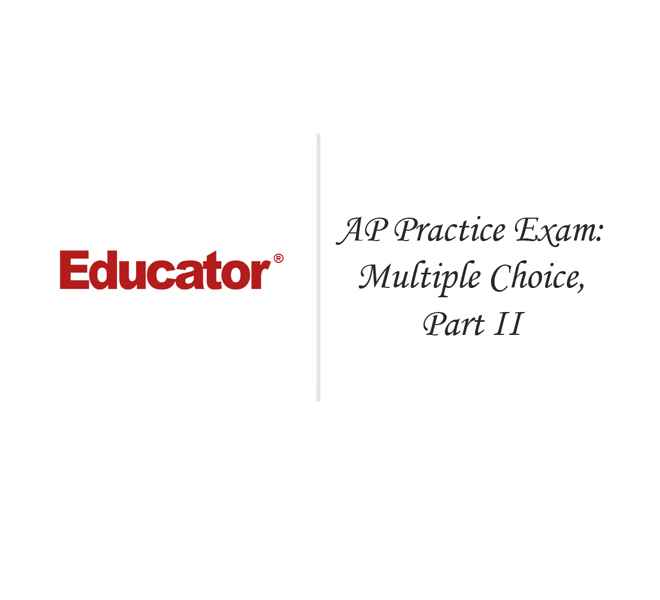Connecting...

This is a quick preview of the lesson. For full access, please Log In or Sign up.
For more information, please see full course syllabus of AP Chemistry
For more information, please see full course syllabus of AP Chemistry
AP Chemistry AP Practice Exam: Multiple Choice, Part II
Lecture Description
This lecture covers multiple choice questions 42-61 from the 1999 AP Chemistry practice exam. Topics include: molarity, equilibrium constants, evaporation, the Rutherford scattering experiment, dissolving a gas (oxygen) in water, precipitates, and limiting reactants.
Bookmark & Share
Embed
Share this knowledge with your friends!
Copy & Paste this embed code into your website’s HTML
Please ensure that your website editor is in text mode when you paste the code.(In Wordpress, the mode button is on the top right corner.)
×
Since this lesson is not free, only the preview will appear on your website.
- - Allow users to view the embedded video in full-size.
Next Lecture
Previous Lecture










































 Answer Engine
Answer Engine




1 answer
Sun Feb 22, 2015 7:37 PM
Post by Shih-Kuan Chen on February 21, 2015
Professor, where can I learn more about flame color and colors of ions and compounds?
0 answers
Post by Mwongera Mwarania on October 27, 2013
Sorry, on re-listening the recording, you have explained that e0 is not like Enthalpy: you don't multiply with. You only reverse the sign if you reverse the reaction. Please ignore my earlier question.
0 answers
Post by Mwongera Mwarania on October 27, 2013
Q.57: Why did you not multiply the e0 by 3 for the second step in accordance with the Hess' law?
0 answers
Post by Professor Hovasapian on July 18, 2012
Link to the AP Practice Exam:
http://apcentral.collegeboard.com/apc/public/repository/chemistry-released-exam-1999.pdf
Take good Care
Raffi